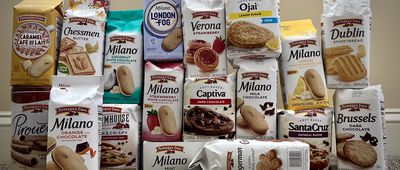Best Cheap Desktop Computers
When purchasing a cheap desktop computer, it's important to understand what you're getting. Entry-level computers are simple machines designed to carry out everyday personal computing tasks. They're not powerhouses designed for intensive, graphics-heavy activities such as video editing or 3D gaming. Still, the best cheap PCs can handle more than just email and web browsing. They often include a decent processor, adequate memory, and generous storage space. We sought out sub-$500 desktops with the hardware for everyday multitasking and multimedia and found contenders from manufacturers such as Dell, Lenovo, Acer -- and even Apple.
Our Top Pick


Acer Aspire TC-780-ACKi5 Review
Pros:
- Powerful quad-core Intel Core i5-7400 processor.
- 12GB of memory (can be expanded to as much as 32GB).
- Fast 2TB hard drive.
- Doesn't take up much desk or floor space (about 16 by 7 by 17 inches.)
- Top tray with 2 USB 3.1 ports for convenient smartphone charging (1 additional USB port on the back).
- PC Verge Editors' Choice.
Cons:
- Some users complain of frequent crashes.
- More processing power than necessary for light computer users, according to PC Build Advisor.
Takeaway: This Acer Aspire desktop blows competitors out of the water with a fast Intel Core i5 processor, 12GB of RAM, and a 2TB hard drive for less than $500. Although some consumers might do just fine with an even cheaper, less powerful computer (such as the Dell Inspiron 3668), a reviewer at PC Verge lauds the value for the money and asserts that buyers should be able to rely on this computer for tasks like web browsing and video conferencing for the next five years, at least.

Dell Inspiron 3265 Review
Available from Dell
Pros:
- Performs basic functions well and is capable of light multitasking, reviewers say.
- Relatively fast quad-core AMD A6-7310 processor.
- Bright, anti-glare, 21.5-inch, full-HD display.
- 6GB of RAM.
- 1TB hard drive.
- DVD drive (rare these days).
- Attractive, space-saving design.
- Recommended by PC Verge as an inexpensive yet powerful computer for a home office.
Cons:
- Performance is on the slow side, according to some user reviews.
- Not ready to use right out of the box; some users report that initial Windows updates took hours.
- No height adjustment for the monitor.
Takeaway: This Dell Inspiron 3265 all-in-one desktop (I3265-A643WHT-PUS) is a particularly good value considering you don't need to buy a monitor. (Cheap PC towers typically come with only a keyboard and mouse.) Reviewers say the seventh-generation AMD chipset can handle basic, everyday tasks relatively well, without freezing up, and the high-definition display is vibrant.

Lenovo ThinkCentre M710 Tiny Review
Pros:
- Powerful performance in a small package (about 7 square inches by 1.36 inches).
- 6 USB 3.0 ports; 2 DisplayPort connections for a dual-monitor setup.
- Not much bloatware.
- More customization options than most mini computers when buying direct from Lenovo.
- Wirecutter's pick for the best mini PC.
Cons:
- Wireless adapter not included by default (listed price includes $25 extra for 802.11ac Wi-Fi and Bluetooth 4.0).
- Large external power supply.
Takeaway: The Lenovo ThinkCentre M710 starts around $360, but adding Wi-Fi/Bluetooth and upgrading from an Intel Pentium processor to a Core i3 bumps up the price. Wirecutter recommends an even faster processor, 8GB of RAM, and adding a 256GB solid-state drive, but that brings the price over $700. Even without those enhancements, the hardware rivals that of a cheap full-size tower but fits in a much more limited space.

Dell Inspiron 3668 Review
Pros:
- Easy to set up and use, according to reviews on BestBuy.com.
- Fast 7th-generation Intel Core i3 processor.
- 8GB of RAM.
- 1TB hard drive.
- DVD drive (rare these days).
Cons:
- In online reviews, some Amazon and Best Buy customers complain that the machine is sluggish.
- Older 802.11b/g/n wireless standard; not as fast as 802.11ac.
Takeaway: The cheapest configuration of the Dell Inspiron 3668 desktop (I3668-3106BLK-PUS) is a prototypical tower PC that's well-liked by reviewers. More than 1,500 Best Buy customers award it an average rating of 4.5 out of 5 stars, and 96 percent say they would recommend it. The Intel Core i3 processor and integrated graphics card are affordable and zippy for everyday tasks like browsing the web and streaming video.

Apple Mac Mini Review
Pros:
- Affordable Apple computer.
- Small, portable, attractive design; less than 8 square inches and 1.5 inches high.
- Integrated power supply and quiet, energy-efficient operation.
- Connectivity options include 4 USB 3.0 ports, 2 Thunderbolt 2 ports, and an HDMI input.
Cons:
- Only 4GB of RAM and a 500GB hard drive; 8GB of RAM costs $100 more and a 1TB hard drive adds $250.
- 1.4GHz dual-core processor; performance is a little slow compared with other desktops in this price range, according to reviews.
- 4K ultra-HD video looks choppy.
- No keyboard or mouse included.
Takeaway: The base configuration of Apple's Mac Mini doesn't have as much hard drive space or RAM as most competing PCs, and upgrading pushes the price well over $500. If you're intent on getting a Mac, though, this is the least expensive option. Its performance is respectable, according to reviews, and the compact design connects to most displays, making this a solid choice as a basic desktop or home theater PC.
Note: Apple hasn't touched this product since 2014, so MacRumors suggests waiting to see if the company announces an update this year.



















